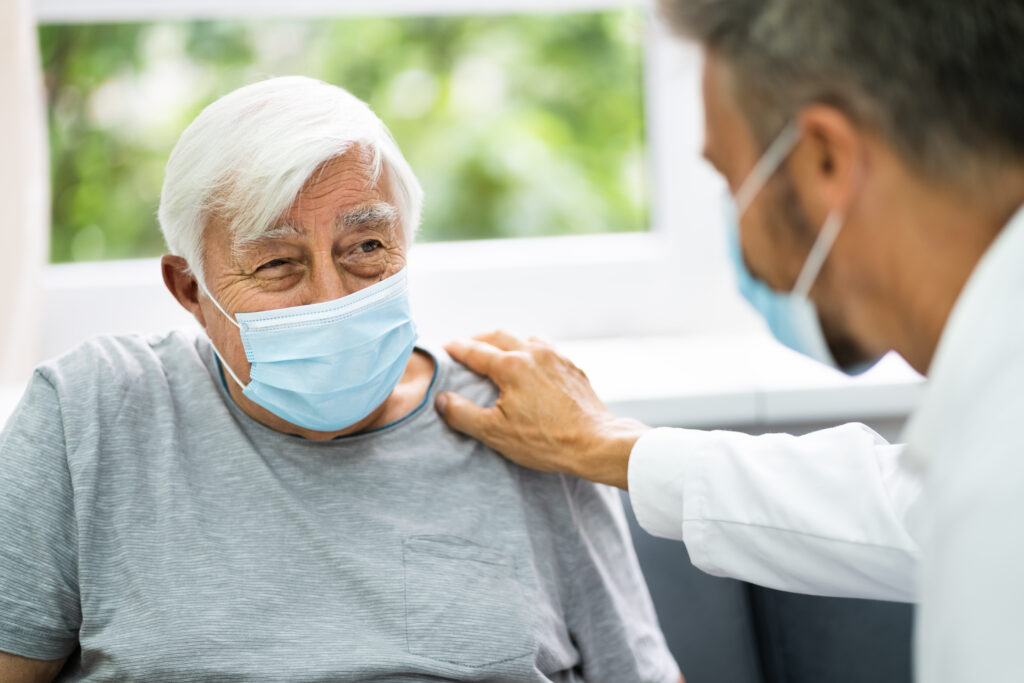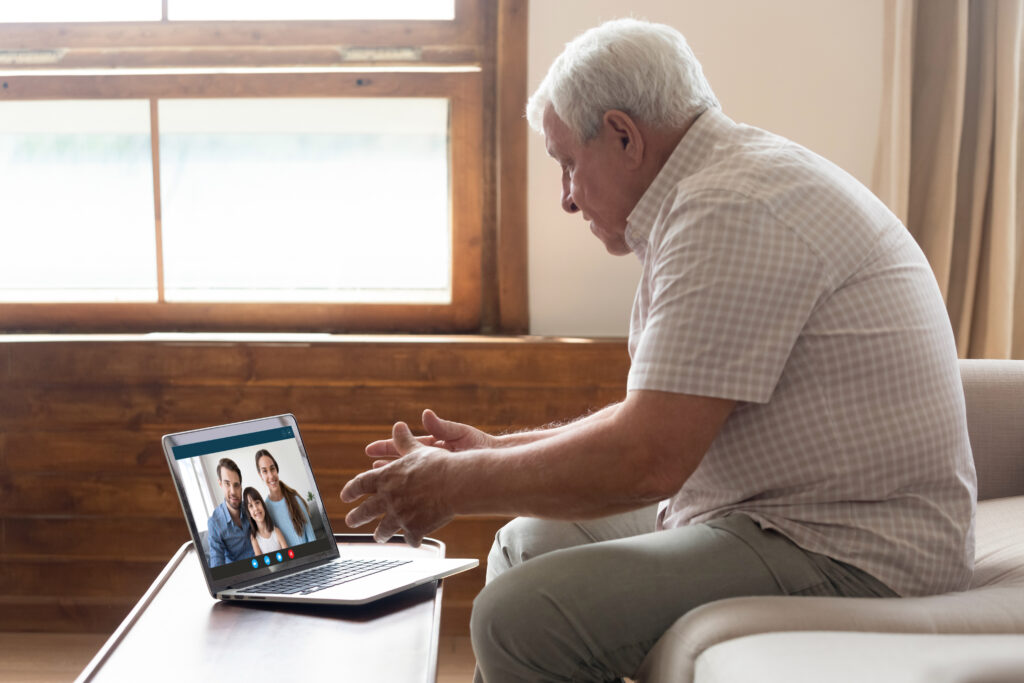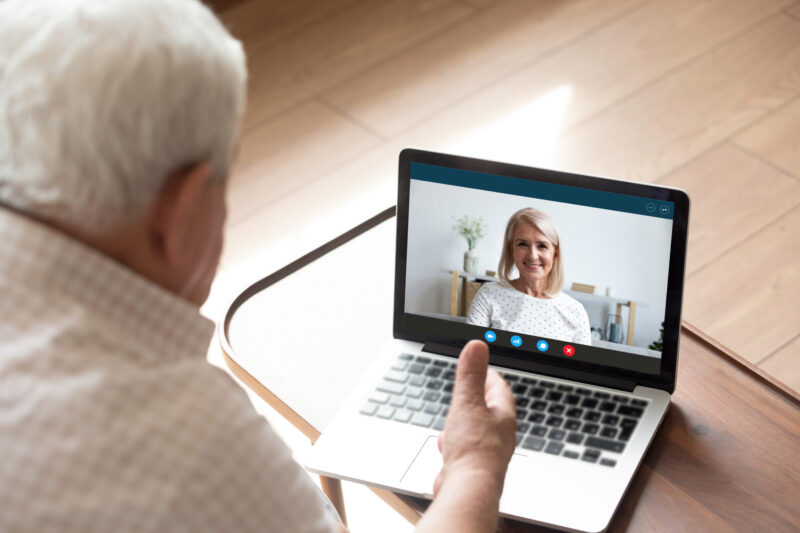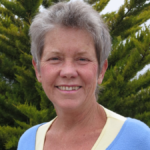About a year ago, I was chatting on the phone with my then-99-year-old father, who was telling me about his morning. He lives on the other side of the country from me, in an assisted living facility in central Pennsylvania. Because he has a catheter, a Licensed Practical Nurse (LPN) had arrived that morning around 7:00 a.m. to change the larger bag that he uses during the night to a smaller daytime bag. LPNs, the low-paid, unsung heroes of any assisted living facility, are the nurses who really know my dad. Intimately. They willingly, gently provide the body care that most of us would rather avoid. Fortunately, they all are very fond of him, as he is of them. He even has nicknames for them.
“Some of the nurses that change my bag are men, and some are women,” my father told me. I could hear him shrugging. He no longer seems to worry about modesty, and has gotten used to either gender helping him shower and empty his bag.

Then I heard about his breakfast and his walk. Most mornings he circles around a patio outside on the grounds of the facility, using his walker. No one ever joins him, but that doesn’t stop him. It never did. He was a daily jogger back in the 1950s, long before it was trendy.
I’m so relieved he moved into that assisted living facility four years ago—long before COVID-19. I can’t imagine him living by himself during the pandemic. He didn’t want to go, of course! Like other competent, high-functioning elderly people of his generation, he is almost defensively independent and prides himself on his self-sufficiency.
Up until a couple of years ago, my two sisters and I stayed in touch with him in the conventional ways— phone, email, and face-to-face visits. Since none of my family members live in the same state, we took turns visiting him once a month. Gradually, his communication options narrowed. He lost the ability to type, and while he enjoys receiving cards and letters, he can no longer write legibly.
Then came the pandemic. Knowing we couldn’t visit, one sister and I agreed to call him everyday—I would in the morning, and she would in the afternoon. This has been very helpful to us, because it provides a daily reading, and I think it’s been good for him as well—anchoring him during such a chaotic, confusing time.

We also tried Zoom sessions, facilitated by a staff member, with mixed success. He found it hard to keep track of all the faces. We find we need to keep experimenting with different forms of communication, seeing what works best, and recognize it will change.
During COVID, whenever anyone in his facility tested positive, residents were restricted to their rooms. I was struck with the way my father remained cheerful even in a confined state. The thought of him virtually imprisoned in his ground-level room with only one window almost brought me to tears, but a year earlier, when he had the chance to move to an upstairs room, he declined. I was sure he was making a mistake, because the upstairs room was lighter and airier, but he preferred the central location of the room he had near the dining room, reception area, and mailboxes.
About a month into the pandemic, he contracted a fever—fortunately it was not COVID. After being taken to the hospital for tests, it turned out to be a urinary tract infection, which is common for men with catheters. He had to be moved to a skilled nursing facility because he needed intravenous antibiotics for two weeks, which his assisted living facility couldn’t provide. Somewhere in all the transitions, he lost his hearing aids. By the time he returned home, he was thoroughly confused, and it took him several days to get his bearings again.
“What do people do after they turn 100? What’s the next phase?”
Being moved to one medical institution after another was by no means the only change he faced. During COVID, his facility was acquired by another corporation, leading to a change in management and considerable turnover. He lost the Director—whom he liked very much—his favorite exercise teacher, and two Directors of Health Care. It was hard for him to keep up with all the staff changes.

A few months ago he was reading a book, If I Live to Be 100: Lessons from the Centenarians, by Neenah Ellis. Since he was turning 100 a month later, I told him he should be the one writing the book. One day he went into the Health Director’s office, showed him the book, and asked, “What do people do after they turn 100? What’s the next phase?”
The Health Director replied, “It’s not very different from what they do before they turn 100! They just take it a few hours at a time. Figure out what they’re going to do between breakfast and lunch. Then decide what to do in the afternoon.”
Sounds like good advice! I’ve decided that when my life gets confusing, that’s what I’ll do—just plan the next couple of hours.
I think what has helped my father most is his sense of humor. It doesn’t take much to make him laugh these days. Our phone conversations don’t make as much sense as they did even a year ago, but we do giggle a lot. He jokes with the nurses, too. My once serious father seems to be getting sillier the older he gets.
I’ve lowered my expectations. My father gradually losing his grasp on reality is not as important to me as it once was. If he’s happy in his life, then that’s good enough for me.
Offering support from a distance isn’t always easy. Sometimes I feel irritated and impatient with him, though I try not to show it. But as I see it— he sheltered, fed, and nurtured me; now it’s my turn to care for him. It’s only fair. The support I offer my father is a way of completing the circle.

